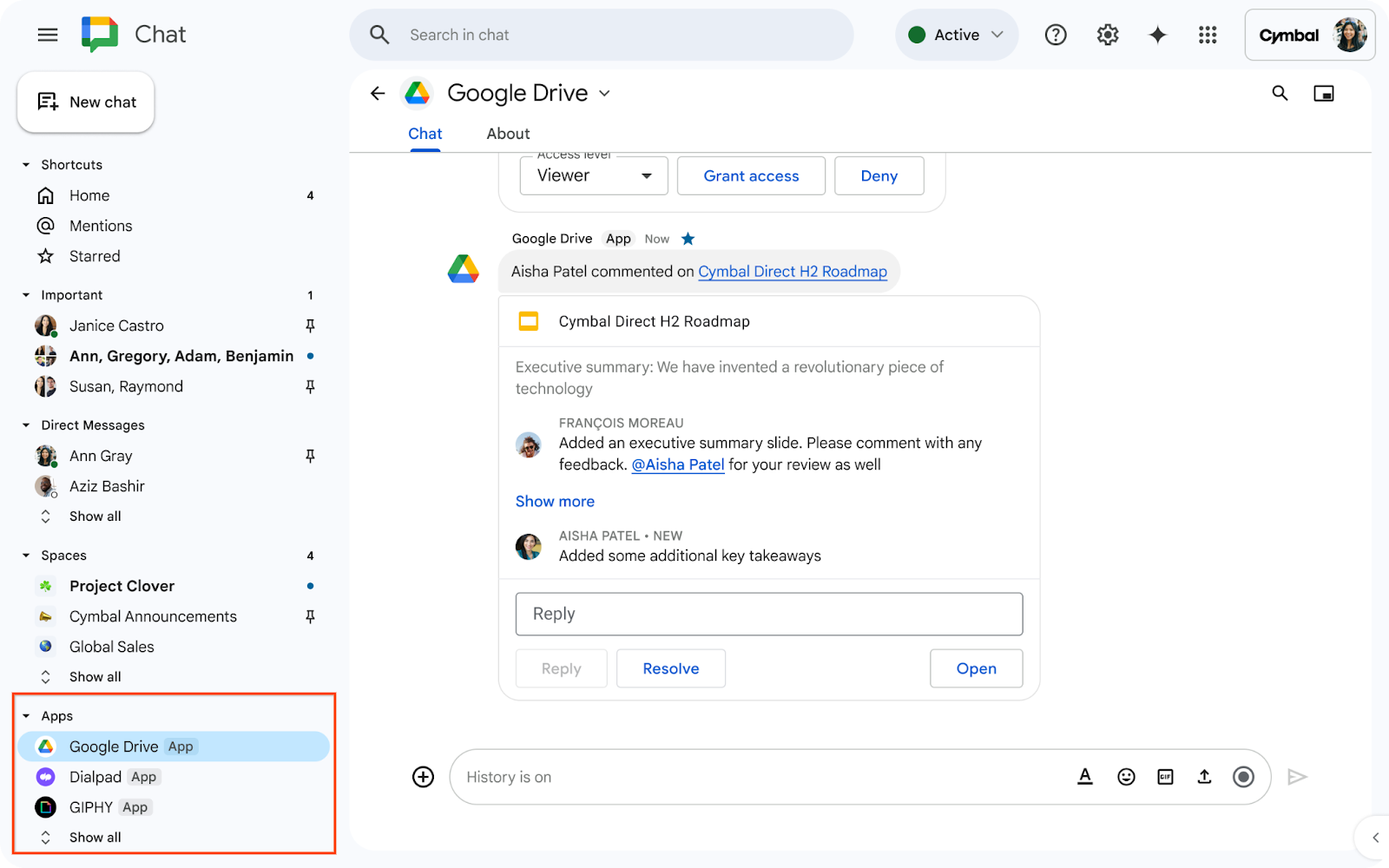Update
[February 12, 2025] We have updated the rollout information for this feature. See the Rollout section below for more details.
[January 30, 2025] We have updated the rollout information for this feature. See the Rollout section below for more details.
[January 9, 2025] We have updated the rollout information for this feature. See the Rollout section below for more details.
What’s changing
As we continue to
enhance the user experience in Google Chat over the last year, we’re excited to announce that users can now organize Chat conversations into custom sections. A highly requested feature, custom sections are useful for scenarios in which users want similar conversations about a topic or project to be in the same location in the left-hand menu of Chat.
To make a custom section, go to the direct messages or spaces section in Chat > hover over the three dot menu > select Create new section > name the custom section > hit enter. You can add conversations from a direct message or space to a custom section by:
- Dragging and dropping it in from another section
- Hovering over a conversation > clicking the three dot menu > selecting Move conversation > Move to [Name of the custom section]
Previously the direct messages and spaces sections in the left-hand menu were independent, individually-scrollable lists. With this update, users can navigate specific sections of their conversations by scrolling across all of their sections as one unified conversation list, view top conversations across each section, and find older conversations within each section by expanding via “Show all.”
For each section, users can also:
- Modify the size (height) of each section
- Reorder a section in the left-hand menu based on preference by moving it up or down
- Toggle an unread button ON (or OFF) to instantly find new messages within each section that need their attention
- Start a new direct message or space message from the three dot menu next to the unread toggle
In addition, users will now be able to find their Chat apps more quickly with a new dedicated Apps section.

End users
Why you’d use it This complete revamp of the left navigation experience on Chat will help users find messages more easily based on their own organizational preferences.
Getting started - Admins: There is no admin control for this feature.
- End users:
- By default, the conversation list is organized by direct messages, spaces, and apps, with each section set to show active conversations only.
- While the new Chat experience is visible on mobile, users can only create and manage sections on the desktop version of chat.google.com or Chat in Gmail.
- Visit the Help Center to learn how to use Google Chat.
Rollout pace - Rapid Release domains: Extended rollout (potentially longer than 15 days for feature visibility) starting on November 21, 2024, with expected completion by the end of February 2025
- Scheduled Release domains: Gradual rollout (up to 15 days for feature visibility) starting on March 3, 2025
Availability - Available to all Google Workspace customers, Workspace Individual Subscribers, and users with personal Google accounts
Resources